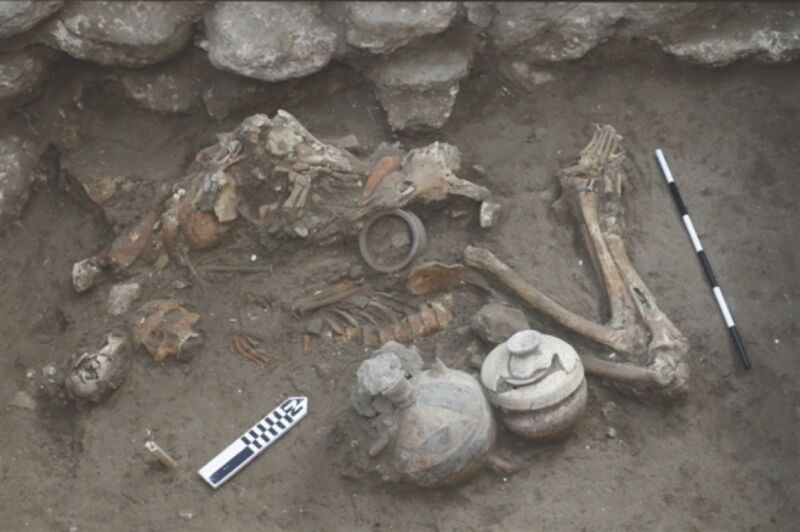More trepanation news: Evidence of brain surgery in Bronze Age Israel

Enlarge / Two Bronze Age skeletons (brothers) were found at Tel Megiddo in Israel. One showed evidence of trepanation. (credit: Kalisher et al., 2023/PLoS ONE, CC-BY 4.0)
Just a couple of weeks ago, we reported that scientists had analyzed the skull of a medieval woman who once lived in central Italy and found evidence that she experienced at least two brain surgeries consistent with the practice of trepanation. Now a recent paper published last week in the journal PLoS ONE has reported evidence of trepanation in the remains of a man buried between 1550 and 1450 BCE at the Tel Megiddo archaeological site in Israel.
Cranial trepanation—the drilling of a hole in the head—is perhaps the oldest known example of skull surgery and one that is still practiced today, albeit rarely. It typically involves drilling or scraping a hole into the skull to expose the dura mater, the outermost of three layers of connective tissue, called meninges, that surround and protect the brain and spinal cord. Accidentally piercing that layer could result in infection or damage to the underlying blood vessels. The practice dates back 7,000 to 10,000 years, as evidenced by cave paintings and human remains. During the Middle Ages, trepanation was performed to treat such ailments as seizures and skull fractures.
In the case of the medieval woman's skull, an oval area in the center of the cross-shaped defect was evidence of a well-healed trepanation procedure. Metal surgical tools were probably used to make a cross-shaped incision to the top of a head, scraping away the scalp from the bone—a trepanation method that is historically well-documented—which could also explain the signs of inflammation and/or infection. The second surgery likely occurred shortly before the woman's death. It's one of the few archaeological pieces of evidence of trepanation being performed on early medieval women yet found, although why the woman in question was subjected to such a risky invasive surgical procedure remains speculative.
Read 8 remaining paragraphs | Comments
from Gaming & Culture – Ars Technica https://ift.tt/3BgD048